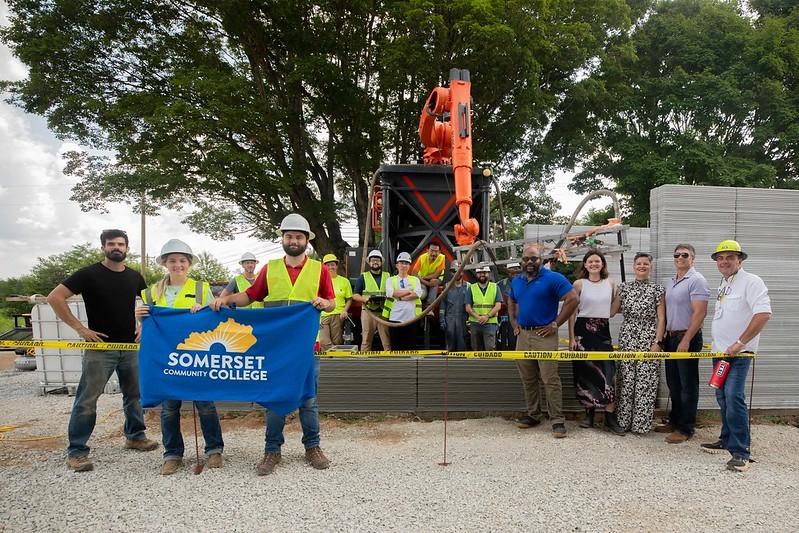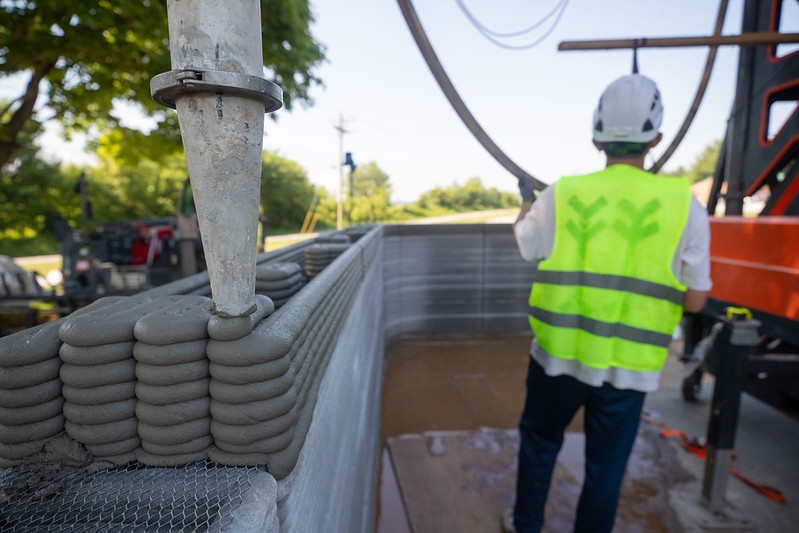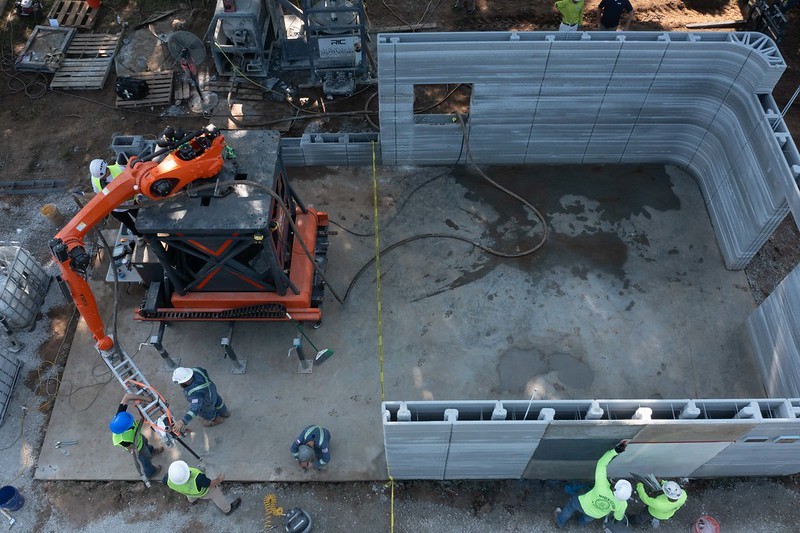
Historic milestone achieved as Kentucky’s first 3D concrete printed structure takes shape at Somerset Community College
Published on Jul 2, 2025
On June 27, 2025, Somerset Community College (SCC) proudly hosted a groundbreaking event marking the beginning of construction for Floodbuster 1, Kentucky’s first-ever 3D concrete printed structure designed to withstand the pressures of natural disasters.
 A large turnout of over 400 community members, local leaders, and industry experts
gathered to witness this historic moment at SCC’s Valley Oak Center, celebrating a
significant advancement in modern homebuilding.
A large turnout of over 400 community members, local leaders, and industry experts
gathered to witness this historic moment at SCC’s Valley Oak Center, celebrating a
significant advancement in modern homebuilding.
Floodbuster 1, a project designed after the 2022 Kentucky Floods and supported by the USDA Rural Development and the Appalachian Regional Commission, was created to empower conventional construction methods with a new way of building robust structures capable of withstanding severe weather, while significantly reducing build time and maintenance, and doubling a structure’s lifespan. This initiative is critical in meeting the growing demand for stable housing amidst rising material costs and the increasing threat of natural disasters.
The event featured inspiring speeches from notable figures, including Travis T. Burton, USDA Rural Development State Director for Kentucky; Dr. Ryan Quarles, President of the Kentucky Community and Technical College System (KCTCS); and Dr. Carey Castle, President and CEO of Somerset Community College. A lively Q&A session followed, allowing attendees to engage directly with experts about this groundbreaking project.
During Quarles' speaking engagement, he pointed to the floodbuster1 site.
“We’re so proud that Somerset Community College is leading Kentucky in creating new high-tech, affordable 3D-printed housing. What you see behind us is really the first step to prove to Kentucky that our community colleges are leading the way on innovation, but also, we’re creating high-tech jobs for the future,” Quarles said.
 The event showcased the initial stages of the 3D printing process, as attendees watched
the layers of Floodbuster 1 take shape and come to life. This trailblazing project,
a culmination of over a decade of SCC’s leadership in additive manufacturing, emphasizes
innovative design and construction methods aimed at addressing pressing challenges
in the housing market.
The event showcased the initial stages of the 3D printing process, as attendees watched
the layers of Floodbuster 1 take shape and come to life. This trailblazing project,
a culmination of over a decade of SCC’s leadership in additive manufacturing, emphasizes
innovative design and construction methods aimed at addressing pressing challenges
in the housing market.
“This project stands as a testament to what can be achieved when academia, industry, and communities come together,” said Professor Eric Wooldridge, an Architect and Professional Engineer, who leads SCC’s additive manufacturing program. “Today, we take a bold step forward in demonstrating the potential of 3D printing technology to create resilient and cost-effective housing solutions for those in need.”
Ryan Cox, the director of Skyland 3D and RIC Technology, which is collaborating on the project, stated that conventional American houses typically cost between $180 and $225 per square foot. In contrast, with 3D-printed homes, he noted that the price can drop to just $60 to $80 per square foot.
 Community collaboration was a focal point of the event, with partners including Habitat
for Humanity Pulaski County, which contributed reference plans and will furnish the
completed home, RIC Technology which supplied the robotic concrete printer, Progress
Appalachia and local businesses that provided equipment, materials, and technical
support.
Community collaboration was a focal point of the event, with partners including Habitat
for Humanity Pulaski County, which contributed reference plans and will furnish the
completed home, RIC Technology which supplied the robotic concrete printer, Progress
Appalachia and local businesses that provided equipment, materials, and technical
support.
“We’re thrilled to see this project come to fruition and are excited about the possibilities it brings for the future of housing in our region,” said Jennifer Seifert, Principal of PROGRESS Appalachia. “Floodbuster 1 illustrates how innovation can translate into meaningful solutions for families and communities.”
As construction progresses, plans for future builds under SCC’s Professor Eric Wooldridge's innovative design are already underway, part of SCC’s ongoing commitment to expanding resilient housing solutions throughout Kentucky and the Appalachian region.
The next collaboration project in the Pulaski County community, Floodbuster 2, will be at the Bluegrass Veterans Ranch, aimed at serving local veterans in need. It will be similar in design to Floodbuster 1 but will be competitively bid and 3D printed by contractors specializing in this technology.
For more information about Floodbuster 1 and the project partners, visit floodbuster1.com.
Interested in studying this technology? Learn more about SCC’s additive manufacturing program.
